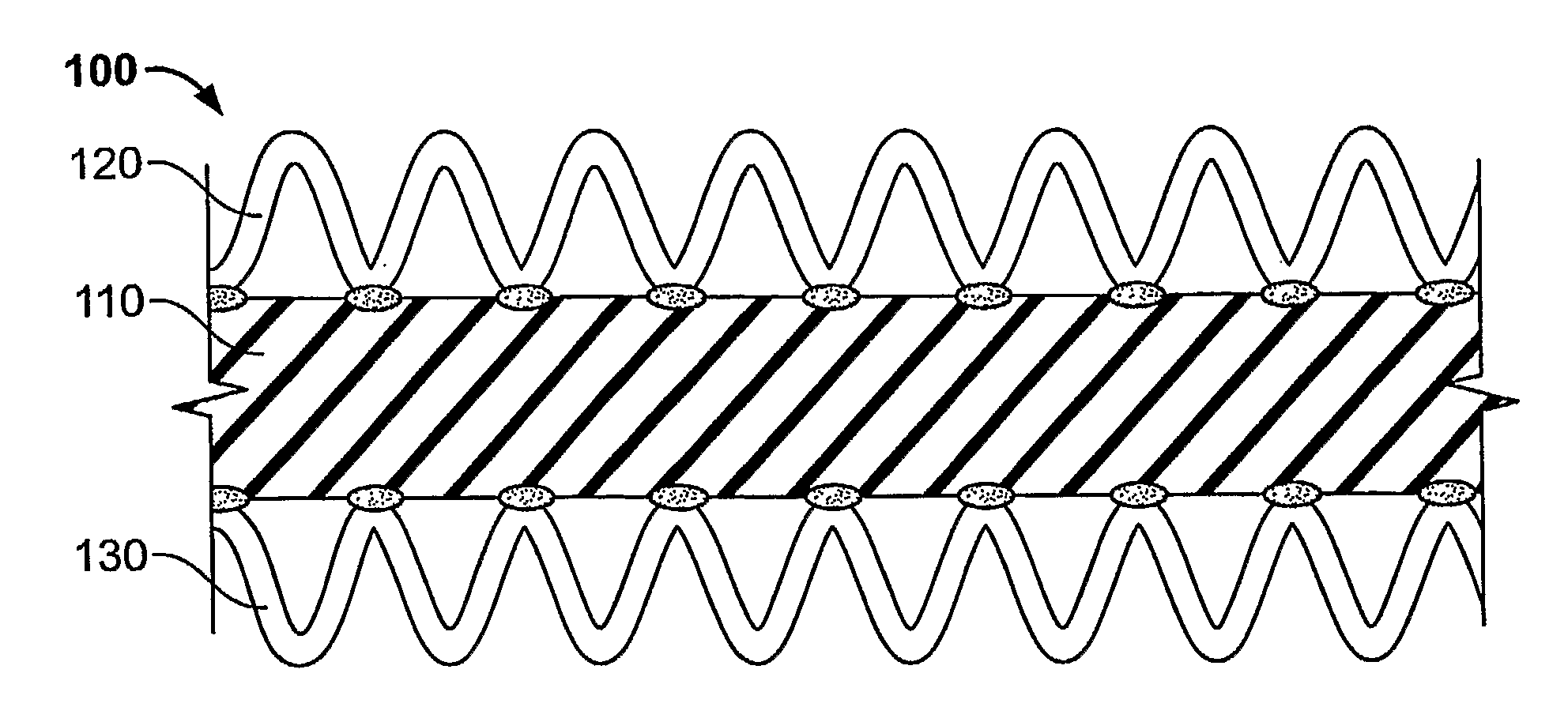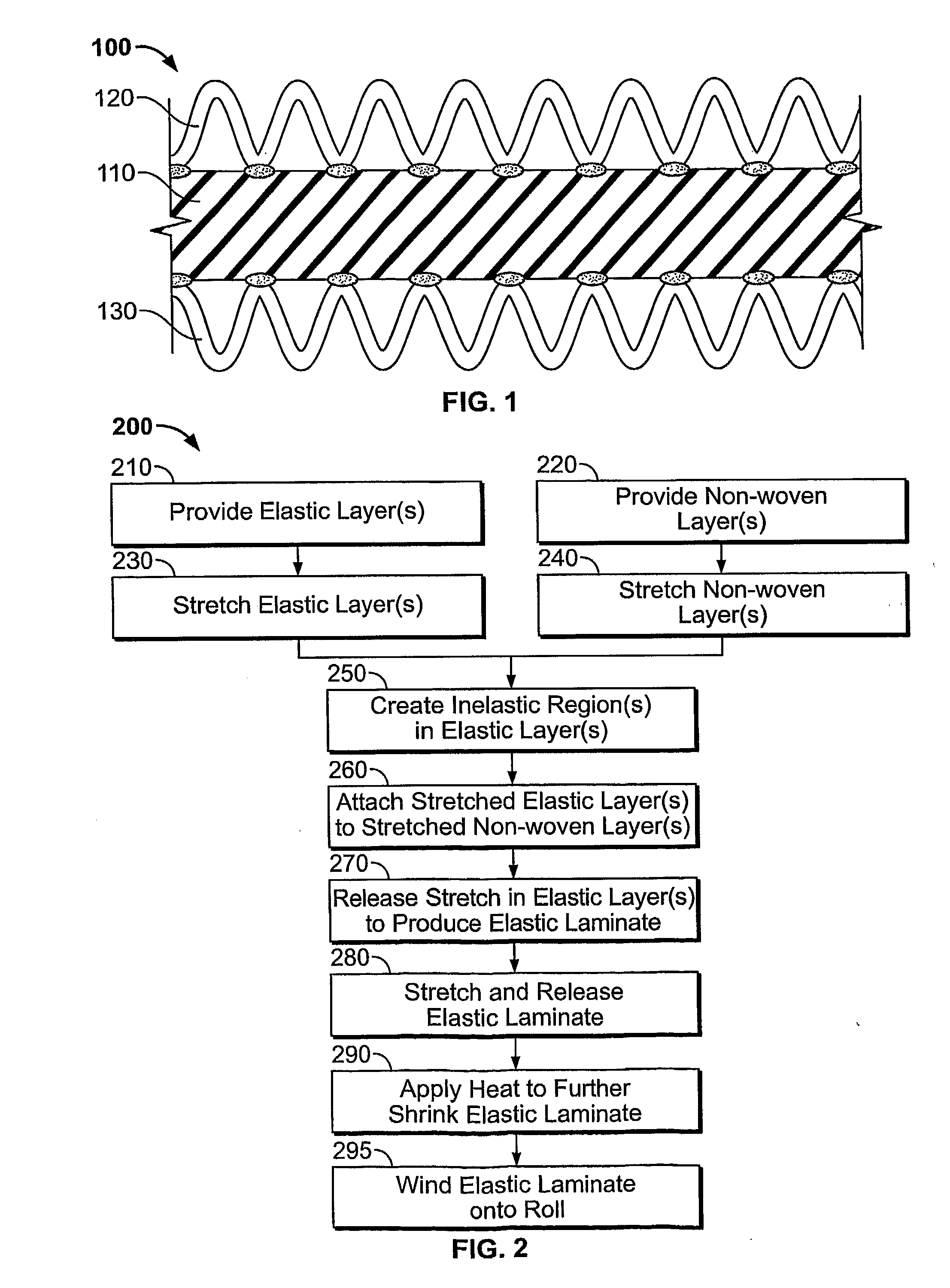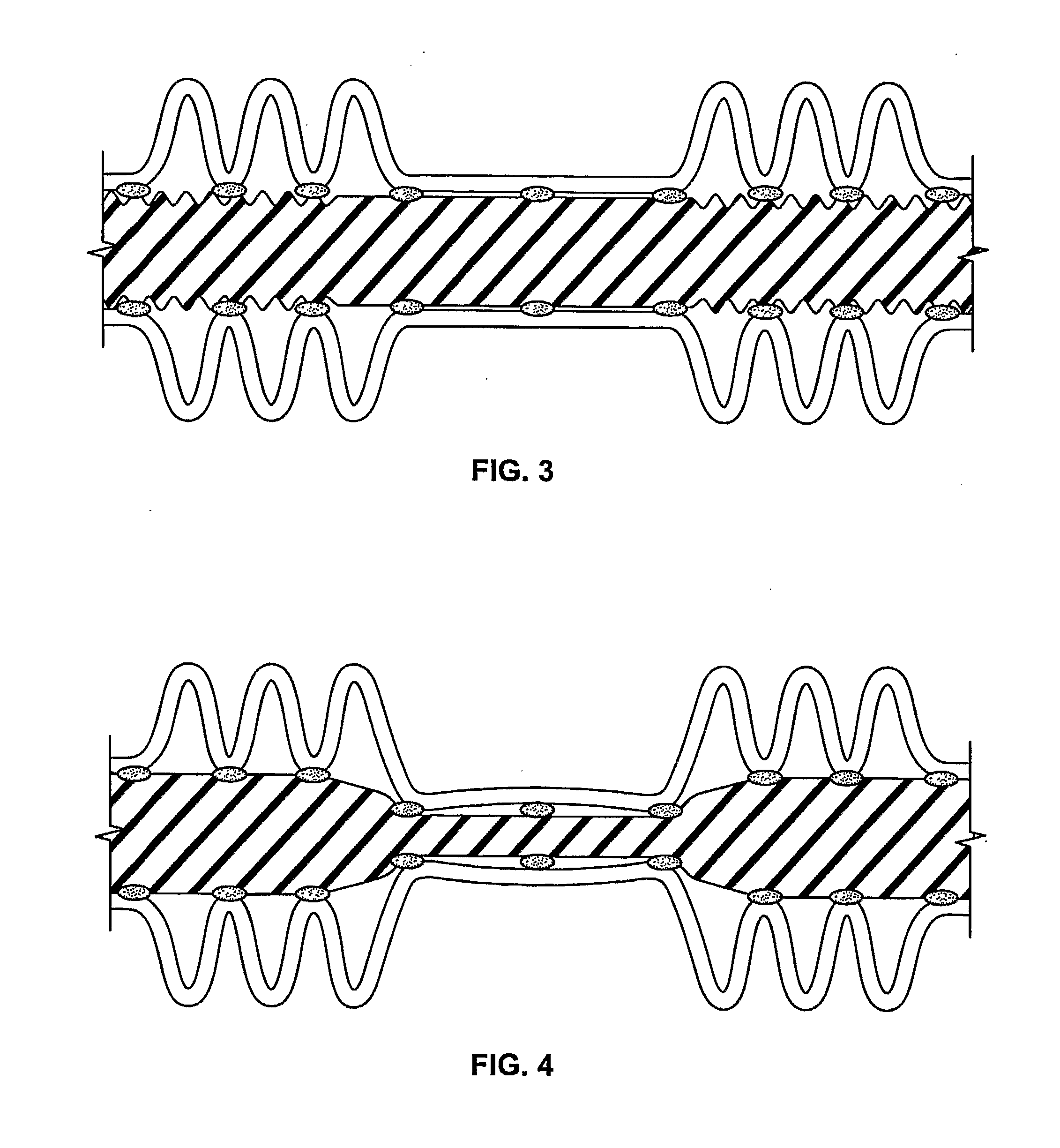Elastic laminates
a technology of elastic laminates and laminates, applied in the field of elastic laminates, can solve the problems of requiring a significant amount of space, requiring expensive tenter frames, and avoiding the use of stretch strips
- Summary
- Abstract
- Description
- Claims
- Application Information
AI Technical Summary
Problems solved by technology
Method used
Image
Examples
Embodiment Construction
[0048]FIG. 1 illustrates a cross sectional view of an elastic laminate 100, according to at least one embodiment of the presently described technology. The elastic laminate 100 includes at least one elastic layer 110 and at least two non-woven layers 120, 130. Alternatively, the elastic laminate 100 may include only one non-woven layer. Thus, it should be understood by those skilled in the art that the presently described technology may be configured in many ways, for example, in three, four, five, or any number of layers, as desired.
[0049]The elastic layer 110 includes an elastic film. For example, Middlesworth et al. (U.S. Pat. No. 6,537,930), herein incorporated by reference, and Morman et al. (U.S. Pat. No. 6,001,460), herein incorporated by reference, disclose several types of elastic films that may be included in the elastic layer 110. The elastic film may be continuous, such as an elastic web, or discontinuous, such as an elastic strip. The elastic film preferably includes a ...
PUM
| Property | Measurement | Unit |
|---|---|---|
| Temperature | aaaaa | aaaaa |
| Temperature | aaaaa | aaaaa |
| Temperature | aaaaa | aaaaa |
Abstract
Description
Claims
Application Information
 Login to View More
Login to View More - R&D
- Intellectual Property
- Life Sciences
- Materials
- Tech Scout
- Unparalleled Data Quality
- Higher Quality Content
- 60% Fewer Hallucinations
Browse by: Latest US Patents, China's latest patents, Technical Efficacy Thesaurus, Application Domain, Technology Topic, Popular Technical Reports.
© 2025 PatSnap. All rights reserved.Legal|Privacy policy|Modern Slavery Act Transparency Statement|Sitemap|About US| Contact US: help@patsnap.com



